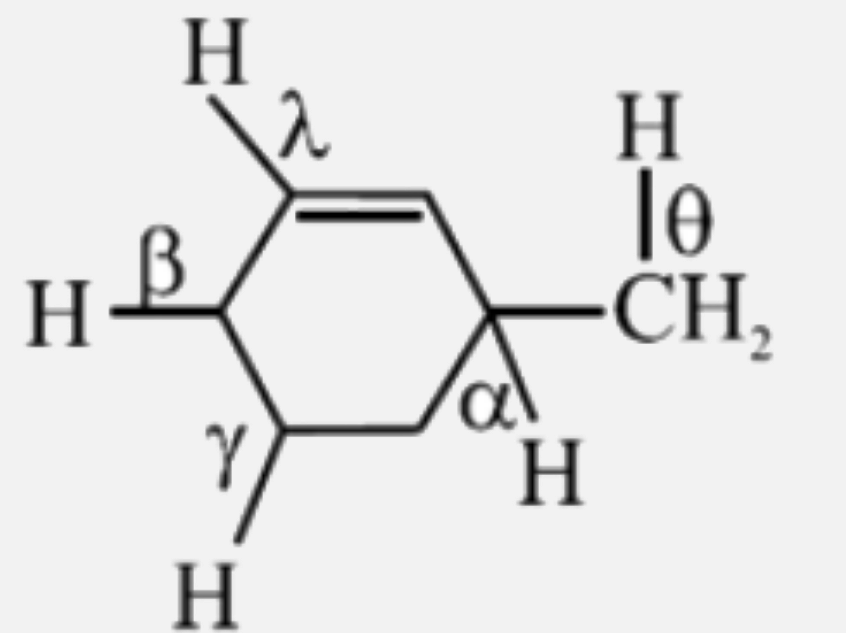The bond dissociation energy of B-F in BF3 is 646 kJ mol−1 whereas that of C-F in CF4 is 515 kJ mol−1. The correct reason for higher B-F bond dissociation energy as compared to that of C-F bond is
smaller size of B-atom compared to that of C-atom
stronger σ bond between B and F in BF3 as compared to that between C and F in CF4
significant pπ−pπ interaction between B and F in BF3 whereas there is no possibility of such interaction between C and F in CF4
lower degree of pπ−pπ interaction between B and F in BF3 than that between C and F in CF4.
Step by step video & image solution for The bond dissociation energy of B-F in BF_(3) is 646 kJ mol^(-1) whereas that of C-F in CF_(4) is 515 kJ mol^(-1). The correct reason for higher B-F bond dissociation energy as compared to that of C-F bond is by Chemistry experts to help you in doubts & scoring excellent marks in Class 12 exams.
Topper's Solved these Questions
- BOOK - VMC MODULES ENGLISHCHAPTER - p-BLOCK ELEMENTS-1EXERCISE - JEE Advanced Archive48videos
p-BLOCK ELEMENTS-1
- BOOK - VMC MODULES ENGLISHCHAPTER - p-BLOCK ELEMENTS-1EXERCISE - LEVEL 273videos
p-BLOCK ELEMENTS-1
- BOOK - VMC MODULES ENGLISHCHAPTER - MOCK TEST 9EXERCISE - CHEMISTRY (SECTION 2)5videos
MOCK TEST 9
- BOOK - VMC MODULES ENGLISHCHAPTER - PERIODIC PROPERTIES OF ELEMENTSEXERCISE - IMPECCABLE50videos
PERIODIC PROPERTIES OF ELEMENTS
Similar Questions
Knowledge Check
- Question 1 - Select One
The bond dissociation energy of B−F in BF3 is 646kJmol−1 whereas that of C−F in CF4 is 515kJmol−1. The correct reason for higher B−F bond dissociation energy as compared to that of C−F in CF4 is
Astronger σ bond between B and F in BF3 as compared to that between C and F in CF4Bsignificant pπ−pπ interaction between B and F in BF3 whereas there is no possibility of such interaction between C and F in CF4Clower degree of pπ−pπ interaction between B and F in BF3 than that between C and F in CF4Dsmaller size of B - atoms as compared to that of C-atom - Question 2 - Select One
The bond dissociation energy of the C−H bond for the compound.

decreases in the order.AP>Q>R>SBS>R>Q>PCS>P>Q>RDQ>P>S>R
The dissociation energy of CH4(g) is 360 kcal mol−1 and that of C2H6(g)is620kcalmol−1. The C-C bond energy
View SolutionThe correct order of bond dissociation energies of various C−H bonds present in the compound is
 View Solution
View SolutionThe enthalpy of formation of UF(g) is 22kcalmol−1 and that of U(g) is 128kcalmol−1.
The bond energy of the F−F bond is 37kcalmol−1 . The bond dissociation energy of UF(g) is (are):View SolutionAssertion : Bond dissociation energy of B−F bond in BF3 molecule is lower than C−F bond in CF4 molecule.
Reason : Atomic size of B-atom is larger than that of C-atom.View SolutionAssertion : Bond dissociation energy of B−F bond in BF3 molecule is lower than C−F bond in CF4 molecule.
Reason : Atomic size of B-atom is larger than that of C-atom.View SolutionThe average energy required to break a P-P bond in P4(s) into gaseous atoms is 53.2kcalmol−1. The bond dissociation energy of H2(g) is 104.2kcalmol−1,ΔH0f of PH3(g) from P4(s) is 5.5kcalmol−1. The P-H bond energy in kcal mol−1 is [ Neglect presence of Van der Waals force in P4(s)]
View Solution

